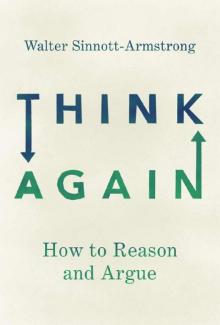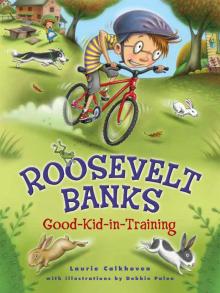Think Again: How to Reason and Argue


Author: Walter Sinnott-Armstrong
Category: Other
Published: 2018
Series:
View: 209
Read OnlineOur personal and political worlds are rife with arguments and disagreements, some of them petty and vitriolic. The inability to compromise and understand the opposition is epidemic today, from countries refusing to negotiate, to politicians pandering to their base. Social media has produced a virulent world where extreme positions dominate. In most of these disagreements, parties yell at each other, very little progress is made, and the end result is a hardening (or further widening) of positions. There is however, such a thing as 'good' arguments. Arguments that offer reasons on both sides can ultimately allow for some mutual understanding and respect, and even if neither party is convinced by the other, the possibility of compromise can result.
Sinnott-Armstrong's book shows the importance of good arguments and reveals common misunderstandings about them. Many people see an argument just as a means to persuade other people or beat them in an intellectual competition. Sinnott-Armstrong sees them as much more essential-as a means to play a constructive role in the way we interact with each other. He shows the way out of the impasse by introducing readers to what makes a good argument. In clear, lively, and practical prose, and using plentiful examples from politics, popular culture, and everyday life, he introduces the reader to topics such as: what defines an argument; the role that reasons play in arguments; the pieces that make up good arguments; what arguments can accomplish effectively; the difference between essential terms like deductive, inductive, and abductive in creating an argument; and how to spot fallacies in others' arguments. Armed with these tools, Sinnott-Armstrong wants readers to be able to spot bad reasoning and bad arguments, and to advance their own view in a forceful and logical way-with an eye toward effective resolution of disputes.
**
Sinnott-Armstrong's book shows the importance of good arguments and reveals common misunderstandings about them. Many people see an argument just as a means to persuade other people or beat them in an intellectual competition. Sinnott-Armstrong sees them as much more essential-as a means to play a constructive role in the way we interact with each other. He shows the way out of the impasse by introducing readers to what makes a good argument. In clear, lively, and practical prose, and using plentiful examples from politics, popular culture, and everyday life, he introduces the reader to topics such as: what defines an argument; the role that reasons play in arguments; the pieces that make up good arguments; what arguments can accomplish effectively; the difference between essential terms like deductive, inductive, and abductive in creating an argument; and how to spot fallacies in others' arguments. Armed with these tools, Sinnott-Armstrong wants readers to be able to spot bad reasoning and bad arguments, and to advance their own view in a forceful and logical way-with an eye toward effective resolution of disputes.
**
 Southwest Truths (Semiautomatic Sorceress Book 3)
Southwest Truths (Semiautomatic Sorceress Book 3) Infused
Infused The Good Doctor
The Good Doctor When Life Gives You Lemons
When Life Gives You Lemons Escaping The Shadows Anthology: Shenanigans'19 @ The West Midlands Book Signing.
Escaping The Shadows Anthology: Shenanigans'19 @ The West Midlands Book Signing. Roosevelt Banks, Good-Kid-in-Training
Roosevelt Banks, Good-Kid-in-Training Song
Song A Wolf's Quest
A Wolf's Quest